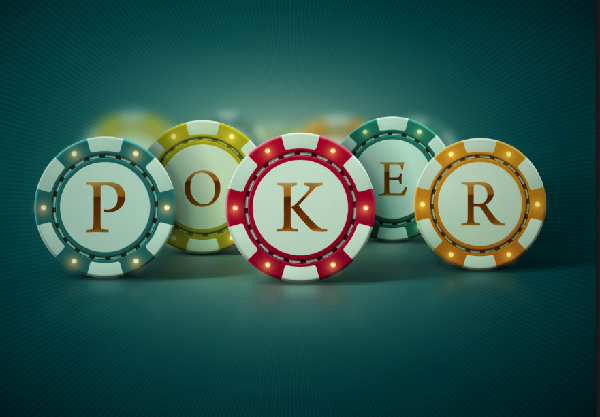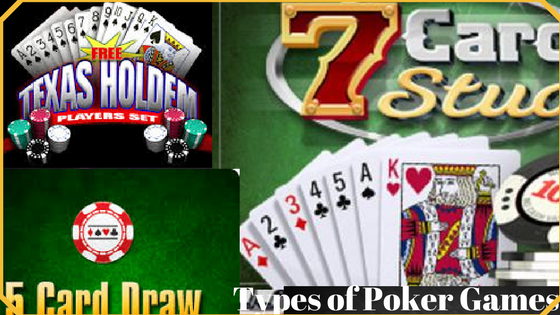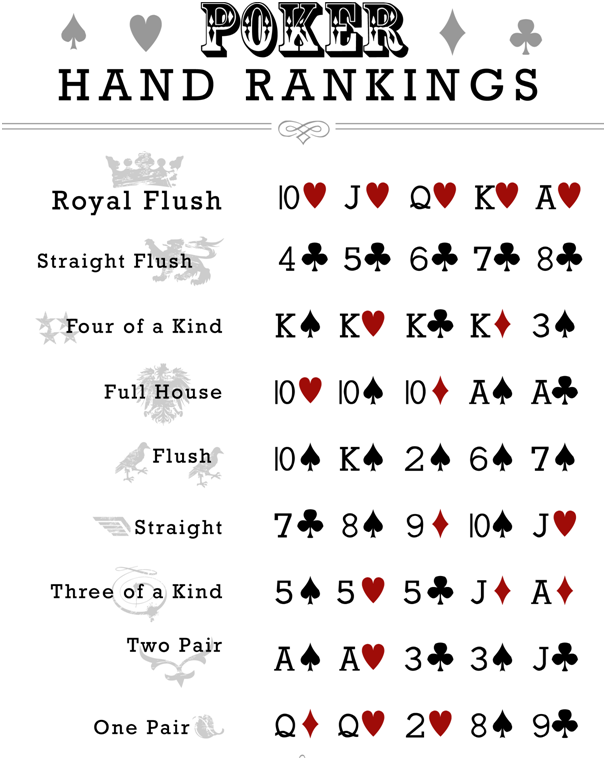Poker Guide – How to Play Poker in India

Poker is the game which is most widely played by Indians. In fact you can see people playing card game at prominent Indian festivals, occasions and even as a pass time at Indian streets and villages.
The standard 52-card pack is used to play poker. The goal of each player is to win the pot, which contains all the bets that the players have made in any one deal. A player makes a bet in hopes that he has the best hand, or to give the impression that he does.
A single card is dealt face down to each player. On a signal from the dealer, each player simultaneously lifts their card, placing it on their forehead so that all of the other players can see it, but the player cannot see his own. There is a single round of betting and then a show down. In some games the suits have rank – Spades (high), Hearts, Diamonds, Clubs – so that the Ace of Spades would be the highest card, the Ace of Hearts the next highest, and so on.
Types of Poker Games

There are variety of card games to enjoy like Texas Holdem poker games which are offered in No Limit, Pot Limit and Limit varieties. All poker games come with different rules – Community Card games such as Hold’em and Omaha, where everybody shares part of their poker hand; Stud games where each person is dealt cards, some of which are hidden and some of which are face up; Draw games where each person is dealt five cards but can exchange some or all of them for new ones; even High/Low Split games where the pot is divided between the best ‘high’ and ‘low’ hands.
Wagering in Poker
All poker games begin with some forced wager over which poker players compete. In Seven Card Stud, there are two forced wagers, an ante and a bring-in. In other games, the forced wagers are a small blind and a big blind and sometimes also an ante.
In any basic poker game, you wager using a number of actions some of which are as follows:
- CHECK – If there is no wager on the current betting round, a player may check. The act of checking passes the action to the next person, immediately clockwise from the player. A check does not forfeit interest in the pot, only the current right to bet. If all active players check during a round of betting, the round is considered complete.
- BET – If there is not yet a wager on the current betting round, a player may bet. If a player bets, the player immediately clockwise from him or her (and any subsequent players) may fold, raise, or call.
- FOLD – The act of folding forfeits all interest in the pot. A player who folds is not required or allowed to wager any further money during the current poker hand, but cannot win that hand either.
- CALL – If there has been a bet on the current round of poker play, a player may call. The act of calling requires the player to match the current bet made by his or her opponent(s).
- RAISE – If there has been a bet on the current betting round, a player may raise. The act of raising requires the poker player to match the current bet, and then make a greater one. All subsequent players are required to call the raise or raise again (“re-raise”) to maintain interest in the pot.
On each betting round, betting continues until every player has either matched the bets made or folded (if no bets are made, the round is complete when every player has checked). When the betting round is completed, the next dealing/betting round begins, or the hand is complete.
If the last bet or raise on the final betting round is called, a “showdown” occurs. This is when it is determined who wins the pot, as players show their hands one-by-one. It may be the case that there is no showdown. This occurs when a player bets or raises, and no active players choose to call the player’s bet (in other words, all players fold). In this case, the player doing the betting or raising wins the full amount of the pot.
Card Values or Scoring in Poker

While Poker is played in innumerable forms, a player who understands the values of the Poker hands and the principles of betting can play without difficulty in any type of Poker game. Except in a few versions of the game, a Poker hand consists of five cards. The various combinations of Poker hands rank from five of a kind (the highest) to no pair or nothing (the lowest):
- Five of a Kind – This is the highest possible hand and can occur only in games where at least one card is wild, such as a joker, the two one-eyed jacks, or the four deuces. Examples of five of a kind would be four 10s and a wild card or two queens and three wild cards.
- Straight Flush – This is the highest possible hand when only the standard pack is used, and there are no wild cards. A straight flush consists of five cards of the same suit in sequence, such as 10, 9, 8, 7, 6 of hearts. The highest-ranking straight flush is the A, K, Q, J, and 10 of one suit, and this combination has a special name: a royal flush or a royal straight flush. The odds on being dealt this hand are 1 in almost 650,000.
- Four of a Kind – This is the next highest hand, and it ranks just below a straight flush. An example is four aces or four 3s. It does not matter what the fifth, unmatched card is.
- Full House – This colorful hand is made up of three cards of one rank and two cards of another rank, such as three 8s and two 4s, or three aces and two 6s.
- Flush – Five cards, all of the same suit, but not all in sequence, is a flush. An example is Q, 10, 7, 6, and 2 of clubs.
- Straight – Five cards in sequence, but not all of the same suit is a straight.
- Three of a Kind – This combination contains three cards of the same rank, and the other two cards each of a different rank, such as three jacks, a seven, and a four.
- Two Pairs – This hand contains a pair of one rank and another pair of a different rank, plus any fifth card of a different rank, such as Q, Q, 7, 7, 4.
- One Pair – This frequent combination contains just one pair with the other three cards being of different rank. An example is 10, 10, K, 4, 3.
- No Pair – This very common hand contains “nothing.” None of the five cards pair up, nor are all five cards of the same suit or consecutive in rank. When more than one player has no pair, the hands are rated by the highest card each hand contains, so that an ace-high hand beats a king-high hand, and so on.
- Two hands that are identical, card for card, are tied since the suits have no relative rank in Poker. In such a case, the tied players split the pot. Note that if two hands contain the same high pair, then the ranking of the next card in the hands determines which one wins. For example: 9, 9, 7, 4, 2 beats 9, 9, 5, 3, 2. Likewise, two hands that have identical pairs would be decided by the fifth card. For example: Q, Q, 6, 6, J beats Q, Q, 6, 6, 10.
When to bet in Poker?
The ranking of Poker hands is based on calculation. The less likely a player is to get a certain hand, the higher it ranks and the more likely it is to win the pot. For example, a player should not expect to be dealt a straight flush more than once in 65,000 hands, but he can expect to be dealt two pair about once in every 21 hands.
Unless a player is planning to bluff, he should not make a bet without holding a hand that he thinks may be the best. No Poker player can bet intelligently unless he knows what constitutes a good hand, a fair hand, and a bad hand. A table of the various Poker hands and the number of combinations of each in a pack of cards is provided.
The Kitty in Poker
By unanimous or majority agreement, the players may establish a special fund called a “kitty.” Usually the kitty is built up by “cutting” (taking) one low-denomination chip from each pot in which there is more than one raise. The kitty belongs to all the players equally, and it is used to pay for new decks of cards or for food and drinks. Any chips left in the kitty when the game ends are divided equally among the players who are still in the game. Unlike the rule in some other games, such as Pinochle, when a player leaves a Poker game before it ends, he is not entitled to take his share of chips that comprised part of the kitty.
Poker is played with Chips
Poker is almost always played with poker chips. For a game with seven or more players, there should be a supply of at least 200 chips. Usually, the white chip (or the lightest-colored chip) is the unit, or lowest-valued chip, worth whatever the minimum ante or bet is; a red chip (or some other colored chip) is worth five whites, and a blue chip (or some other dark-colored chip) is worth 10 or 20 or 25 whites or two, four or five reds. At the start of the game, each player “buys in” by purchasing a certain number of chips. All of the players usually buy in for the same amount.
The Banker in Poker
One player should be designated as the banker, who keeps the stock of chips and records how many have been issued to each player or how much cash the player has paid for his chips. Players should make no private transactions or exchanges among themselves; a player with surplus chips may return them to the banker and receive credit or cash for them, while a player who wants more chips should obtain them only from the banker.
Fixing your Betting Limits
There are different ways of fixing a betting limit. Some limit is necessary; otherwise a player with a lot more money would have, or would be perceived to have, an unfair advantage. Once fixed, the limit should be unalterable throughout the game unless the players unanimously agree to change the stakes. Some popular limit systems follow:
Fixed limit
No one may bet or raise by more than a stipulated number of chips, for example, two, or five, or 10. Usually this limit varies with the stage of the game: In Draw Poker, if the limit is five before the draw, it might be ten after the draw. In Stud Poker, if the limit is five in the first four betting intervals, it is 10 in the final betting interval (and often ten whenever a player has a pair or better showing).
Pot limit
Any bet or raise is limited to the number of chips in the pot at that time. This means that a player who raises may count as part of the pot the number of chips required for him to call. If there are six chips in the pot, and a bet of four is made, the total is 10 chips; it requires four chips for the next player to call, making 14; and the player may then raise by 14 chips. But even when the pot limit is played, there should be some maximum limit, such as 50 chips.
Table stakes
The limit for each player is the number of chips the player has in front of him. If the player has only 10 chips, he may bet no more than 10 and he may call any other player’s bet to that extent. In table stakes, no player may withdraw chips from the table, or return chips to the banker, until he leaves the game. A player may add to his stack, but only between the deal just completed and the beginning of the next deal.
Play poker online at Casinos
Many online casinos offer poker games to be played online. There are hundreds of variants to enjoy like Texas Holdem Poker, Omaha Poker, Seven card stud poker2-7 Triple Draw, Omaha Hi-Lo, Seven-Card Stud 8 or Better, Chinese Poker, Pineapple Open-Face Chinese Poker, 2-7 Open-Face Chinese Poker, Six-Plus Hold’em and Razz Poker. As an Indian you can also enjoy Teen patti poker game, Taash, Rummy and other variants too. All you need is to register yourself at the online casino, open a casino account, make a deposit, grab a welcome bonus offered by the casinos, select the game of poker you wish to play and there you go. Also you can enjoy poker game at real Indian casinos and have full fun to enjoy this thrilling and passionate game.